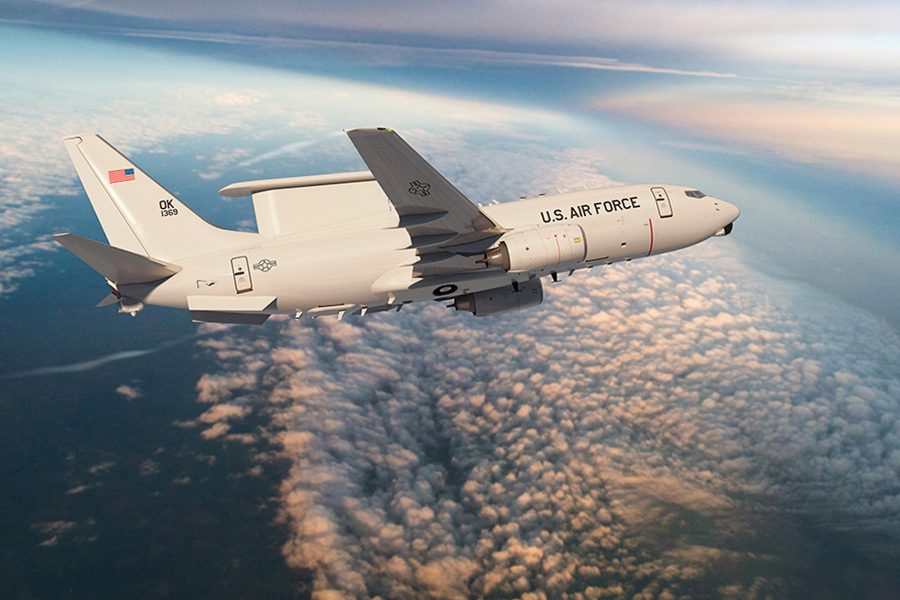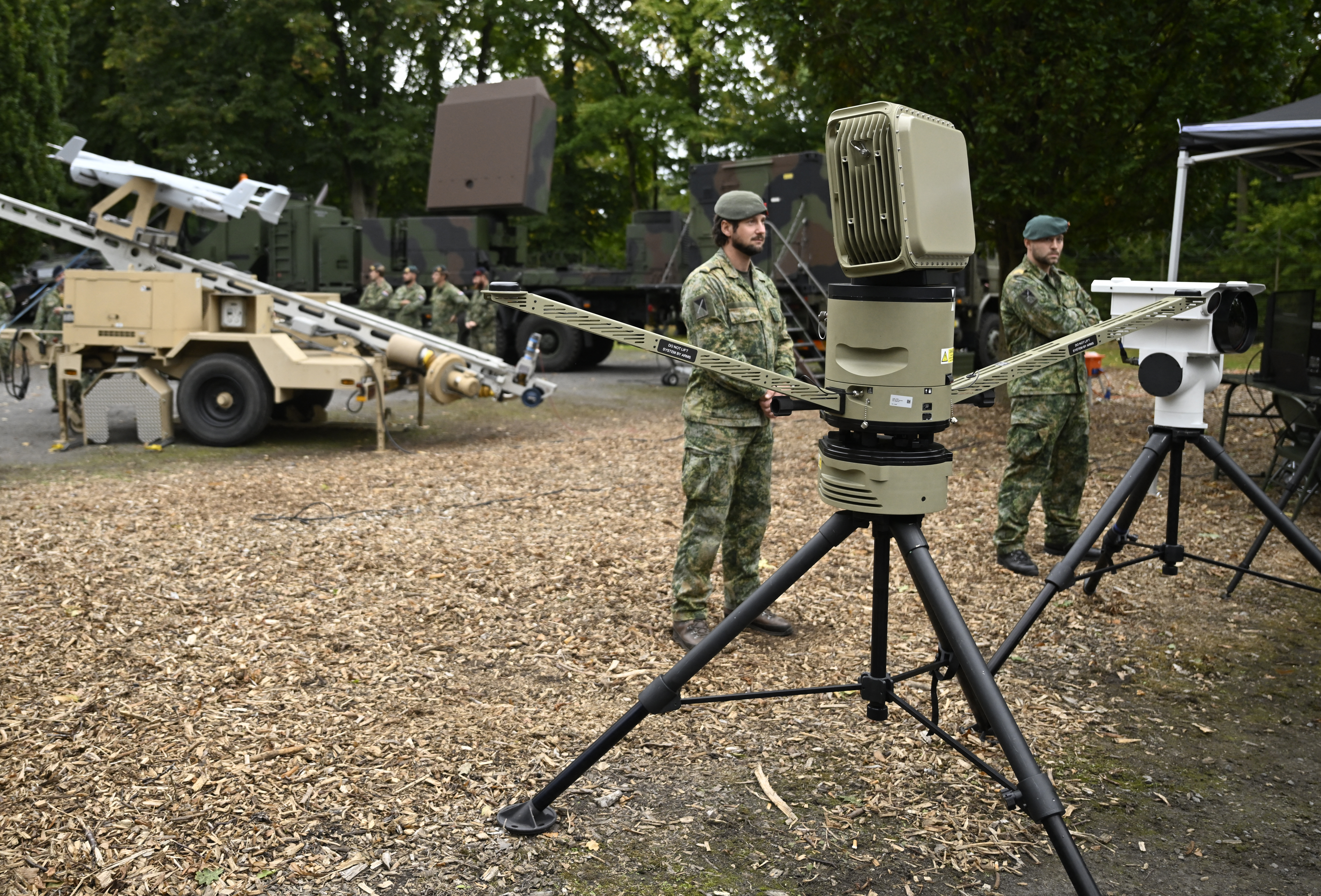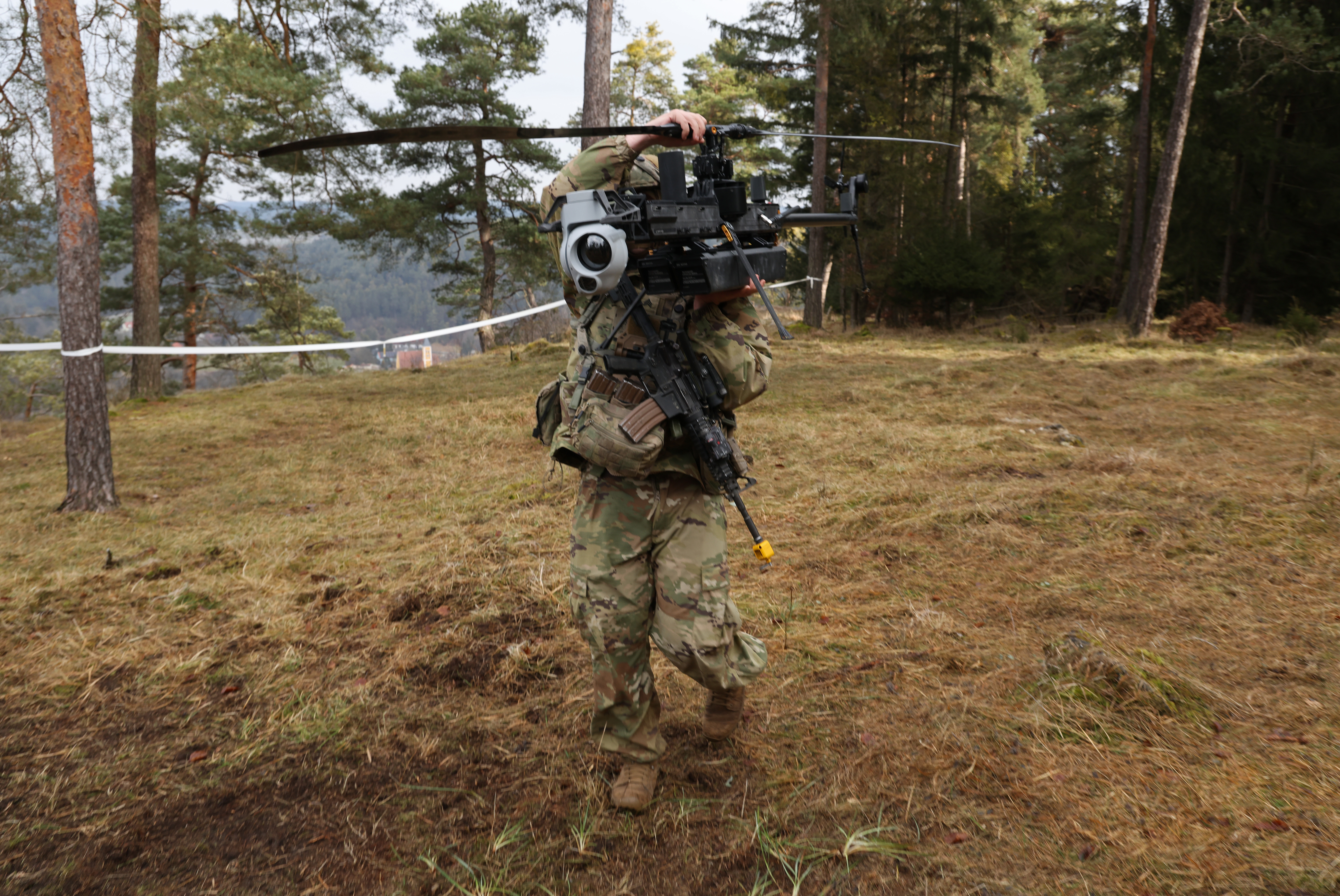
The Air Force plans to cancel its program to purchase a fleet of E-7 Wedgetail airborne target-tracking jets as part of the fiscal 2026 budget, a senior defense official confirmed June 26.
The decision was driven by “significant delays with cost increases” and concerns about the fleet’s ability to weather attacks by the advanced anti-aircraft weapons the U.S. military expects to face in future wars, the defense official told reporters at a briefing on the Defense Department’s 2026 spending request.
Instead, the Pentagon now hope to buy five more Navy E-2D Hawkeye planes to fill the airborne early warning role before relying on satellites to share data on enemy aircraft and missile movement—a move critics say would hinder the U.S. military’s ability to wage air combat in the years ahead.
“We wanted to be able to span the globe,” a second senior military official said. “We are bullish on space, and we think that that’s a capability that can be achieved, actually, faster than the E-7 will deliver at this point.”
The proposal marks a major shift away from one of the Air Force’s top-priority acquisition programs and leaves the service’s battle management community in limbo as it retires decades-old workhorse jets without a concrete replacement.
Though Defense Secretary Pete Hegseth foreshadowed the move in budget hearings on Capitol Hill over the past few weeks, this is the first time Pentagon officials have directly acknowledged the E-7 program’s impending demise.
The Air Force declined to answer questions about the decision. A Boeing spokesperson declined to comment.
Last year, the service inked a $2.6 billion contract with Boeing to deliver two Wedgetail prototypes in fiscal 2028. It had wanted to buy 26 E-7s in total to replace the 1970s-era E-3 Airborne Warning and Control System jets, about half of which have already retired.
But the Government Accountability Office recently estimated the price of developing the two E-7s had grown to $3.6 billion—a 33 percent increase—and said the U.S. Wedgetail’s first flight had slipped by nine months to May 2027. The first set of combat-ready jets was slated to be in place by 2032.
The Air Force is requesting nearly $200 million for Wedgetail development next year, about one-third of the development money it received in fiscal 2025 and two-thirds of what the service had planned to ask for in 2026, according to official budget documents. It also wants another $200 million for Wedgetail-related procurement. It’s unclear what will happen to the funds already promised to Boeing if the program ends.
Congress has the final say over whether the cancellation can move forward. Lawmakers have pressed defense officials for more information on the new path ahead, airing concerns that ending the E-7 program in favor of yet-unproven tools in space could hurt military readiness and their local communities.
House appropriators included $500 million in development funds for the Wedgetail in their proposed 2026 defense budget bill, arguing that a “combination of air and space assets for mission sets such as early warning are necessary today and will be required well into the future.”
At a Senate defense appropriations subcommittee hearing on the Air Force budget earlier in the day, Sen. Lisa Murkowski (R-Alaska) challenged Air Force leaders to justify the cancellation and questioned the about-face from their previous support for the E-7.
Air Force Chief of Staff Gen. David W. Allvin characterized the move as a difficult decision made by the Department of Defense as it considered operations across air, land, sea, and space. The Air Force will consider how to stitch together the remaining air battle management assets to ensure potential threats don’t slip through, he said.
Murkowski wasn’t sold: “We don’t want to be operating off of a wing and a prayer here,” she said.
Gen. Chance Saltzman, the Space Force’s top officer, said potential vendors have already presented “promising” data on a space-based airborne target-tracking network. New equipment could start sharing data by the end of the decade, he said.
Space Force Vice Chief of Space Operations Gen. Michael Guetlein’s previous estimate that satellites designed to track airborne targets should enter operations in the early 2030s is “not too far off,” Saltzman added.
Spokespeople for members of Oklahoma and Alaska’s congressional delegations, who represent the two domestic AWACS bases, did not immediately respond to questions about whether the lawmakers would seek to block the cancellation as part of the annual defense spending and policy bills.
But Doug Birkey, executive director of the Air and Space Forces Association’s Mitchell Institute for Aerospace Studies, hopes lawmakers step in.
“Effective combat airpower requires air battle management,” he said. “It comes down to empowering fighters, bombers, refuelers, electronic attack aircraft, and more to better understand the battlespace so they can maximize opportunities, while seeking to minimize zones of undue vulnerability.”
It’s a “make-or-break moment” for the mission after decades of deferred modernization, he said. The AWACS fleet has struggled to remain viable as more are decommissioned; about half of the E-3s could execute at least one of their core missions in fiscal 2024.
“Space-based [airborne moving target indication] represents a terrific potential capability, but it’s not an operational capability today,” Birkey said.
He worries about the potential impacts on the pilots who would fly the E-7 and the air battle managers who work alongside them.
“We should not repeat mistakes made in the 1990s, when the Air Force divested too much electronic warfare capability,” he said. “That career field has yet to recover.”
Richard Aboulafia, an aerospace analyst with the Michigan-based consulting firm AeroDynamic Advisory, said in an email that dropping the buy sends a message about the Trump administration’s skepticism of America’s foreign military alliances and interoperability with other nation. Part of the Wedgetail’s appeal was that Australia already flies the E-7, the United Kingdom has ordered its own fleet, and the NATO alliance plans to begin replacing its own AWACS jets with Wedgetails within the next decade.
The post Air Force Wants to Kill E-7 Wedgetail Buy appeared first on Air & Space Forces Magazine.

Air, Budget, 2026 budget, airborne early warning and control, AMTI, AWACS, battle management, Boeing, command and control, E-3 AWACS, E-7 Wedgetail, fiscal 2026 budget request
Air & Space Forces Magazine
[crypto-donation-box type=”tabular” show-coin=”all”]








